It doesn’t take long before you notice some folks have an easier time dealing with their climbing skins than others. Part of that is knowing the proper care and feeding of your skins. Part is the genetic make up of the skins themselves — the type of plush, the glue, and the tip ‘n’ tail hardware.
With glue it seems no one has the recipe perfected. Some batches are better than others, with some brands typically stickier than others, but never forever, and never completely reliably. In addition, a glue that is perfect for spring tours may be inadequate mid-winter, contrarily a glue that is strong enough for severe cold or narrow skis may be so sticky they are difficult to remove from wide skis, especially on warm days and require special handling like the use of a plastic mesh on the glue so the skins can be peeled apart after storing them glue-to-mesh-to-glue since glue-to-glue requires vice grips and unusual strength to separate.
Tip and tail kits on the other hand, are consistent in their performance over time and varying snow conditions regardless of the plush or glue. They make attaching and removing climbing skins easier. The good ones make it noticeably easier AND add security by providing enough tension along the length of the ski to help overcome the limits of weak glue – the bane of modern climbing skins.
Tip ‘n’ Tail Systems: European vs American
There are two basic versions of tip ‘n’ tail systems. The traditional European system, popularized in the Alps, uses a solid, riveted metal tail hook with an elastic tip loop. If you have trouble twisting your leg so you can rip your skins from the tail, this may be the best system for you. Snow doesn’t always, but can bunch up under the rubber piece which increases drag when you’re breaking trail in deep snow. If you’re skinning on the surface of firm snow, there’s no disadvantage. With proper tension on the rubberized tip loop this system provides excellent longitudinal tension.The biggest problem with this system is the tendency for the tip loops to be relatively small compared to the loops available for skins with an elastic tail. This results in the tip loops being accidentally kicked off. If you have a narrow ski tip, these work great. Dynafit has come up with an elastic tip system that eliminates the drag from the typical rectangular hunk of rubber at the tip, by making it a low surface area cord of rubber that slips into a slot at the tip of the ski. This means they only work with Dynafit skis, but with them it works very well yielding strong tension along the length of the ski. Removal from the tip still requires practice, but yanking the rubber cord from the slot appears easier when watching well practiced rando racers do it.
In North America a solid, non-elastic tip loop with a tensioning tail piece has become the popular choice, largely due to the popularity of telemark bindings (before free pivots were available or their value understood) that made it difficult to yank from the toe, which made peeling from the tail the standard procedure. This system provides elasticity at the tail, where a stretchy skin will need the slack taken up, and they’re easy to remove with your skis on as long as you can kick your tail up behind your shoulder to grab the tail to rip the hide. For some folks, this requires more agility than their joints will allow. In that case, try the Euro system.
Climbing Skin Tips: Loops, hooks & wires
With a solid, non-elastic tip loop at the shovel of your ski the skin plush is the primary source of drag, which is acceptable. How much this drag is enhanced or minimized varies with the actual loop design by manufacturer.
Simple Tip Loops
The simplest incarnation is to use a solid wire, or a loop of braided wire cable with the skin attached with the skin overlapped around one side, and bonded to itself. This allows the overall length of the skin to be adjusted. The overlap creates a fairly blunt leading edge to the skin which increases drag a bit in deep snow, and provides a place for snow to begin creeping under the skin. The latter phenomenon is only an issue if your skin glue is on the weak side of tackiness. These sorts of tip loops have been around forever, but my favorite incarnation is the flexible, braided cable loop first introduced by G3 in 2002 and still available on their Expedition skins, or nearly every other manufacturer’s economy model.To reduce drag with a simple D-loop it is better to have it sewn to the leading edge with a piece of durable fabric. The only issue with this method is you’re pretty much stuck with whatever loop you select you why buy it, which is inevitably too small for many ski tips. But it delivers a smooth leading edge. As long as the loop is big enough to not get accidentally kicked off, these are an excellent choice for a tip loop.
Black Diamond’s Adjustable Tip Loop
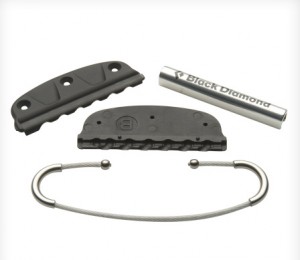
Black Diamond's adjustable tip loop. Fits almost any ski tip but remember to measure twice - cut once!
My only issue with it is the time it takes to set up. If you’re having a shop do this for you, by all means, let ‘em do it. Without a bit of practice assembling this loop requires more mechanical ability, or tricks than you are likely to possess the first time you do it. The mechanically inclined may even enjoy the process, and the final result is unquestionably worth some extra effort. It eliminates the bulk of an overlap attachment, for a smooth, low drag leading edge. Since you only get to adjust it once, I’d recommend erring on the side of too wide versus too small.
G3’s Tip Hooks
G3 came out with a unique take on tip loops a few years back that uses two hooks that swivel and grab your ski tip on either side, making them adaptable to almost any ski tip that isn’t thicker than 8mm. This does eliminate a fair number of modern skis with plastic blobs at the tips, but works with most skis made for backcountry skiing. These hooks attach to a plastic plate that the skin is also bonded to, providing a very thin leading edge. Combined with these low profile hooks there is less drag at the leading edge of G3’s alpinist skins.
Colltex’ Deep Wire Loop
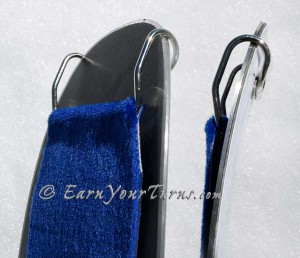
See how deep the skin rests beneath the tip of the ski? You won't be kicking these off accidentally ever.
There is no obvious model name for it and Colltex hasn’t bothered to respond to my email inquiry, so I’m calling it the Colltex Deep Wire, for how deeply the skin is ‘submerged’ from the ski tip where it attaches to the wire.
It is solid wire tip loop, bend into an asymmetric shape that will accomodate a ski tip with 15mm of thickness, and a deep length to hold the skin at least a full 37mm below the ski tip, a sure cure to prevent it ever getting kicked off. And it’s solid steel; it won’t be wearing through anytime soon. In short, it rocks!
There is one problem with it. Almost nobody carries it and since it isn’t visible online or in the Colltex catalog I can only say good luck finding a pair. Tell ‘em Dostie sent you and reference this webpage. Maybe together we can make ‘em more readily available.
Emergency Tip Loop
It would be irresponsible of me to not include reference to an emergency tip loop — the ubiquitous Voile ski strap. You should always have a spare pair of these in your pack because you just never know. And they’re good for a zillion other things too.updated 15apr14
K2’s Rig
One thing the K2 climbing skin tip and tail kit require is a pair of holes at the tip AND tail of your skis. The easiest way to get this is to simply buy K2 or La Sportiva skis. You can use your existing skis, but that’ll require drilling holes yourself. The pre-installed versions come with metal rings to prevent the hole from reaming out.
However you obtain them, the beauty of the K2 system is it presents hardware at the tip of the ski with a very low profile, and thus a lower coefficient of friction, a valuable asset when breaking trail. At the tail, a hook is connected to a rubber strap that doubles back on itself in the hole at the tail, for a very secure connection that allows you to jam the tails of your skis in the snow on a switchback without fear of them prying off. Then, when it’s time to de-skin, the tail provides an easy strap to grab and rip the hide from tail to tip without taking your skis off.One quirk that is intrinsic to this system is how the tip hook, as loose as it feels when routed through the tip hole, hangs on and won’t let go without being guided back through the hole. Thus, when ripping tail to tip, you can’t expect the skin to fly off at the tip as happens with a tip loop. Instead, you just need to modify your expectations and when you get to the tip, stop pulling on the skin and simply let the tip hook fall through the hole, freeing the skin to then be stored in your pack for the next lap. That trick took me awhile to adapt to.
end update 15apr14
Climbing Skin Tails: Solid & Elastic tail hooks
It should be stated that with good glue, a tail strap or hook is not necessary. Back in the day when Ascension skins were purple and founder Paul Hebert cooked his glue from a magical recipe that no one, but NO ONE has been able to replicate we didn’t need tail hooks. Even then, however, the magic formula was bound to get contaminated somewhere along the line. So even if you luck out with a good batch of glue on your new skins, eventually you’ll want/need to add a tail. Adding one early just makes you better prepared for the inevitable.
Genuine Guide Gear – Adjustable and Cammed Tail hooks
G3’s original, game changing tail used a modified rubber Voile strap that was secured to the tail of your ski with a riveted clamp and a metal clip that was bent around the tail of your ski. To cinch it tight, you just pulled down on the rubber tail to the desired tension. To remove, you grab the rubber tail and yank it back to pop the metal clip off, and then rip the hide. This is a great system except it requires you to set the tension every time you put your skins on. With cammed tail hooks, you set the position of the tab once and just hook it on or take it off.For next year G3 has revised the metal hook on the tail to eliminate the need to adjust the tension every time you put the skins on (see image of alpinist skins above). Now you can set it for a pair of skis and pretty much forget it. A nice, overdue improvement.
BD’s ClipFix™
The idea of using camming action to secure skins at the tail was first introduced with Black Diamond’s Clip-Fix tail kit, pioneered by Andrew McLean. Unfortunately the solid metal nature of the Clip-Fix doesn’t allow it to take up very much slack when climbing skins get wet and stretch, which they inevitably do in maritime climates, especially on spring tours. A good idea, but one whose ultimate goal is better achieved by the STS tail kit.
Black Diamond’s STS Tail Kit
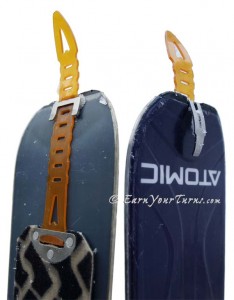
STS tail kit - The BEST tail available for climbing skins. Works on any ski, and can be added to any skin.
© 2011

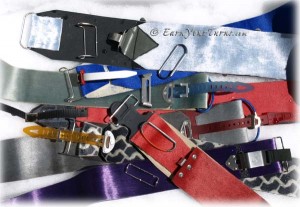
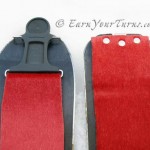
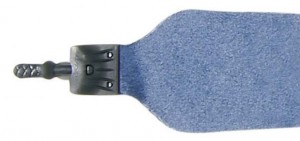
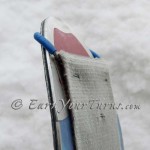
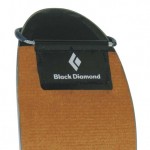
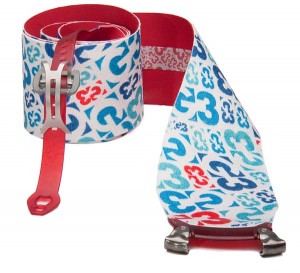
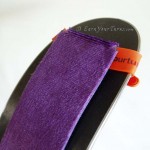
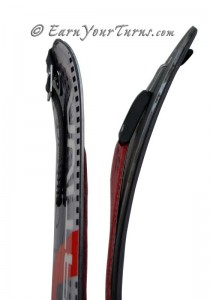
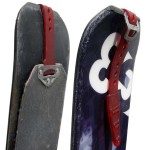
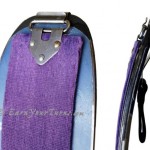
14 comments
6 pings
Skip to comment form
BD used to be my favorite, but having tried the new G3 unit…it blows it away. Better strap durability and much more solid lock on the ski. this thing never pops off…
have you tried it, or compared them?
Author
bob,
Sounds like you’re talking about the new tail for G3’s Alpinist skins, right? Or do you mean the tip hooks?
Either way, no I haven’t tried the NEW alpinist skins…yet. Hope to do so starting next week. Agree that the tail hook looks bomber. Wasn’t as impressed with the tip hooks when I tried ’em a few years back. Nice, but didn’t wow me. Know others who have them and love ’em.
Only problem I see with them – for the moment – is that you can only get the new G3 tail hook with their Alpinist skins since it is “welded” to the skin. IOW, you can’t obtain it as a replacement tail for another brand of skins like you can with BD’s STS kit. But I hear that is only a temporary situation and they will be offered as a replacement/upgrade kit next season.
Dostie –
Thanks for the diverse spread of clips side by side. I switched to the BD skins with STS clips a few years ago for my BD twin tipped ski. All was fine until recently when I broke two of the rubber straps on the tail in a matter of weeks. Like you, I try to get the tail under foot area of my other ski on the switchbacks. I have a feeling this bashed the rubber strip – possibly augmented by the dorky twin tip. For any designers listening, it seems like this vulnerable part of the clip system should be buffered a bit.
As a side note, I just got out of a great hut trip where a couple folks had the Coltex skins for the first time. They were marveling at how fast they slid when going down the odd roll. They sound like a great skin. Perhaps a bit pricey, but worth the extra from what I hear.
Joe
What about climbingskinsdirect’s tip loops (https://www.climbingskinsdirect.com/Skins.html#Accessories)? They seem to be sort of a compromise between the standard D-loop and Colltex’s thing, as they’re not as long or deep as the Colltex but they are bent and welded stainless steel wire.
Author
SJ,
My last experience with the tip loops for ClimbingSkinsDirect was the classic Euro bungeed tip loop. No, I’m not a fan and since it wasn’t any different than other offerings I did not highlight it. Am not familiar with the loop you reference and their site doesn’t provide images that are very insightful. It looks like a similar ring to one that Colltex offers which works on some skis, but has limits. If that is true, and I can’t tell for sure, it doesn’t appear to be adaptable to as many different ski tip styles as Colltex deepwire or BD’s adjustable tip loop. You indicate it looks like a compromise. Indeed. The main thrust of this article was to highlight the best (IMO – based on experience), not necessarily every possible loop and tail available.
Have you used them? Do you like them?
I got my friends set up with splitboards and skins and went with ClimbingSkinsDirect because I’d heard good things and they were less expensive than Ascensions. I had them get the metal tip rings because the bungeed tip loop would be silly on a split, and I was reasonably impressed (with the skins in general as well as the loops). On splits they work about the same as the standard D loop, but I was messing around trying them on a few of my skis and I think they’re more versatile than the standard D loop. The rigid hooked bend allows them to stay on round wide shovels better than equivalent width D loops, for sure. There are limits, though, and they probably don’t work quite as well as the Colltex. I really only mention them because they are readily available, whereas you said finding the Colltex loops was a quest unto itself.
Author
Indeed, the bent wire tip loop holds much better than a simple rectangular one. This is particularly important with splitboards where the tip is not symmetrical. G3 makes a bungeed tail hook that is similar to their tip hook. I’ve heard good things about it but have not seen it in action or talked to anyone using it.
Sounds like maybe I should do a bit of investigating for tips ‘n’ tails specifically made for splitboards.
Thanks for the additional info on the tip loops from ClimbingSkins Direct. I DO like their plush, and the pair I’ve had for five years took four years for the glue to go bad. I know they had some batch issues with glue. Hopefully those have been worked out.
FWIW: I recently installed BD’s STS tail kit on a set of Ascenscions that came with no tail. Install was pretty easy and just used a hammer against a concrete floor to put the rivets in. Good stuff. I’m using them with a pair of Voile Vectors this season. One thing missing from your overview is G3’s new Twin Tip tail connector:
https://www.genuineguidegear.com/life/blog/naheed/new-twin-tip-connectors
I’m using it on these skins for the vectors and seems to work just fine. There’s no way for the tail to pop off a twin til with this, while the cam can slip off doing a kick turn or something.
Hdiddy – Thanks for pointing the G3 piece. It might solve the recent spate of broken straps on the tail of the skin I’ve been having. It looks a lot thicker than the typical tail strap and may stand up to more abuse.
It’s thick hard plastic. Should be able to take a beating.
I have always been a tip loop only guy ( standard skin ). I’ve always found the tail hooks just a unnecessary nuisance. I know I’m bucking the trend but the following rules apply to all skins.
A few simple rules:
1. don’t drop your skins in the snow ( if you do scrape the snow off the glue with your ski edge ),
2. at the bottom of the run place your skis facing the sun, dry or warm them by rubbing them clean with your hand and carefully apply skins.
3. cut the tail in a curve about 20cm shorter than the ski. There is no benefit in having your skin go close to the tail of the ski, you get no added grip back there and usually skis have a curve near the tail which promotes snow getting into the tail of your skin.
4. At the top of the run take your skis off and place facing the sun, dry or warm the skins by wiping snow from skins. Start from the tail and pull skin from ski to the binding ( 1/2 way ) and fold tail onto glue to this point. Then remove the rest of the skin and fold tip to center mark. This prevents dropping skin in snow and keeps tip and tail glue folded on top of middle of skin where glue should be in best condition. Place folded skin inside your jackets ( closest to your body so the glue warms up ).
5. Don’t hang your skins up at the lodge, just take them out of the bag and place them somewhere they will warm and dry without opening up and exposing the glue to contamination which is far worse a hazard than slightly damp skins….
If you’re using non-glue skins (like Gecko or Contour hybrid) you can pretty much get away without a tailclip 99% of the time. If the skin lets go, just clean and reapply. By far the weirdest system has to be Contour Hybrid Splitboard skins. They have a fixed D-hook at the tail, and a removable D-hook with velcro at the tip. It takes a while to figure out how to cut these skins, and if you lose the velcro piece you’re f*^&€d. Other than that, they are great.
I’ve used “glueless” skins now for about four years. Yes, you can clean the vacuum adhesive so it works better but I think for reliability you are better off to have a tail hook (STS recommended) in case your skins fail you in the field and you won’t be able to clean them until you return home.
True. I used to carry a spare tailclip in my pack in case the skin failed. But after not using it for a whole season I no longer do. The Kohla elastic one works great as a backup because you don’t need to rivet it, you could bash it on with a rock if needed.
But like I said, if you cut the skins right at the contact point at the back and no tailclip, it works really well with glueless skins. Worst case scenario is if the glue gets wet, you’d have to dry it and it will stick again.
[…] skin tip kits unless they are really wide. Bent wire tips will tend to work better, especially the deep wire loop from Colltex, or G3′s swiveling hand […]
[…] Related Posts Tips n Tails for Climbing Skins […]
[…] This is a subject that is dealt with in great detail elsewhere on this site. You want a good tip and tail kit, with some elasticity between the two to take up the slack in your skins when they stretch because they will when they inevitably get wet. Either the stretch is in the tip, or the tail. Which one you prefer depends on how limber your hips and knees are. If you rip the hide at the top without taking skis off, do you prefer to rip from the tip or tail? If you rip from the tail, you better be limber and get a stretchy tail system. My recommendation is the Ascension STS tail with a cammed hook. It can be substituted on any climbing skin. For those who prefer to rip from the tip, get a system with a bungeed tip loop. Details on most systems here. […]
[…] Available pre-trimmed for the BMT series, or V-Werks Katana 112, or as a universal climbing skin that you trim yourself. In the latter case, I recommend also substituting an STS tail kit. […]
Thank you for the article.
Great blog that I enjoyed reading.
[…] Tips ‘n’ Tails for Climbing Skins […]